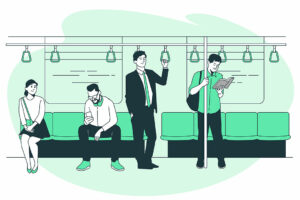
Congressman urges gov’t to build monorails, trams
A CONGRESSMAN has urged the government to build monorails and trams to help ease traffic congestion and the commuter experience, amid the looming phaseout of jeepneys as part of the government’s Public Utility Vehicle Modernization Program (PUVMP).
“If we can provide our citizens with a proper monorail or light rail system, the need to bring a car will decrease,” Manila Representative Joel R. Chua said in a statement.
“Much of the EDSA congestion comes from vehicles from northern NCR (National Capital Region) and central Luzon provinces, and from commuters from the east and west of EDSA going to the Makati and Manila,” Mr. Chua, also the vice chairperson of the House Metro Manila Development committee, said.
He noted that monorails would suit the main roads connecting Manila City and Quezon City, while tramway lines could be built in the port areas between Manila City and the province of Cavite, central Luzon.
Mr. Chua also called for additional light rail lines from Manila City to the province of Laguna, which is located in south of the capital, to ease traffic along southbound expressways.
“This would ease commuters to and from Cavite and Laguna daily and weekly,” Mr. Chua said in Filipino, citing the increase of people traveling to Metro Manila from the south.
“The new train systems that will be constructed can be placed either underground, on top of bridges, or at ground level, depending on the findings of experts after feasibility studies; hence, it is necessary to commence with the said feasibility studies,” the lawmaker said.
“[Travel time] will be faster if the government builds additional train lines,” he said in Filipino.
According to the Land Transportation Franchising and Regulatory Board (LTFRB) website, more than 300 public utility jeepney (PUJ) routes and 76 UV Express routes in Metro Manila alone have not been consolidated under the government’s modernization program.
This would mean less public transport options at the unconsolidated routes. — Beatriz Marie D. Cruz



